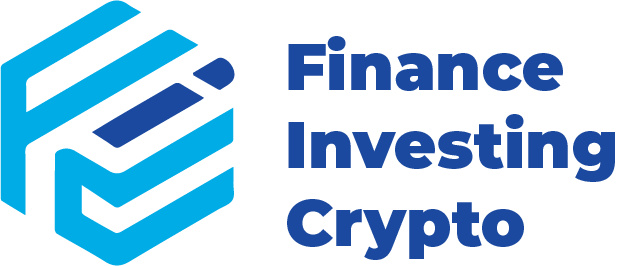Guillaume Poncin of Alchemy predicts that the passage of the Genius Act will soon bring major financial institutions into the stablecoin business.
The U.S. Senate has passed the Genius Act, bringing long-awaited regulatory clarity to stablecoins. With this development, major financial institutions are expected to roll out their own stablecoins. Guillaume Poncin, CTO of Alchemy, gave an interview to crypto.news. Alchemy is working with Visa, Coinbase, Stripe, and Robinhood on stablecoin issuance.
Until now, major banks have held back, waiting for clear regulations, a need the new bill addresses. Poncin believes that, in the future, every bank will issue its own stablecoin and operate its own blockchain.
crypto.news: You have recently suggested that banks will soon issue their stablecoins and run their blockchains. What are the main advantages of this move for them and their clients?
GP: For banks, issuing their own stablecoins allows them to capture the float on reserves, with the ability to bring in hundreds of millions in annual revenue from treasury yields at current rates. They also maintain control over their customer relationships and transaction flows rather than ceding that to third-party issuers.
For clients, bank-issued stablecoins offer instant settlement, 24/7 availability, and programmable money that is backed by the trust and regulatory protections of traditional banking relationships. The right Web3 infrastructure makes it feasible for banks to launch these capabilities without years of blockchain development.
CN: If banks get into the stablecoin business, what does this mean for major stablecoin issuers like Circle and Tether?
GP: Circle and Tether have established themselves as the default rails for crypto-native use cases and international transfers. Banks can focus on different segments, like corporate treasury, regulated institutional flows, and integration with existing banking services. Owning your own stablecoin provides additional asset control and the ability to generate yield.
The market is massive and growing. There’s room for specialized players. Circle’s upcoming IPO actually validates this thesis because it shows that traditional finance recognizes stablecoins as legitimate infrastructure. We power infrastructure for both existing issuers and banks exploring this space, and we’re seeing a playing field with ample room to offer new products and grow the market.
CN: Given Alchemy’s role powering USDC (via Circle), what differences do you see in how issuers like Tether and Circle approach minting, compliance, and infrastructure decisions?
GP: Circle has taken a highly regulated, transparent approach, with regular attestations, clear banking relationships, and working closely with regulators. This makes USDC attractive for institutional use cases and integration with traditional finance.
Tether operates more like a global liquidity provider in that it prioritizes availability and ease of use across markets.
From an infrastructure perspective, Circle tends to be more conservative with technical changes, while Tether is more expansive about going multi-chain. Both have their trade-offs; institutions may favor USDC for compliance and transparency, while developers or platforms focused on emerging market access might tap Tether for reach.
CN: Blockchain infrastructure is difficult to manage and secure. Do you think that banks will favor layer-1 or layer-2 networks? What does this mean for large layer-2 ecosystems like Ethereum?
GP: It depends on the use case. For large-scale operations like B2B transactions, banks may prefer operating directly on Layer 1 for maximum security and finality. However, for retail-scale applications, Layer 2 networks make the most sense because they offer sub-cent transaction costs, customizable security settings, and the ability to capture transaction revenue through sequencer fees. For example, Coinbase already generates over $200 million annually from Base, their L2.
This is actually bullish for Ethereum. L2s still settle on Ethereum, so they benefit from its security. We’re seeing a Cambrian explosion of specialized L2s. Some are optimized for payments, others for trading or identity. Banks can choose or build an L2 that matches their specific compliance and performance requirements while inheriting Ethereum’s battle-tested security. That’s where modular rollup stacks come in handy. With solutions like Alchemy’s rollups-as-a-service (Raas), institutions can launch tailored L2s that inherit Ethereum’s security while offering full control over execution, fees, data availability, and more.
CN: Banks require constant communication to facilitate transactions between their respective clients. How do you envision the interoperability between their blockchains in this context?
GP: Interoperability is the most important challenge, but it’s solvable. We’re already seeing solutions emerge with cross-chain messaging protocols, shared sequencer networks, and atomic swap mechanisms. The key is that, unlike traditional correspondent banking, blockchain interoperability can be trustless and instant.
I envision a model where major bank chains connect through established protocols, similar to how international wire transfers work today, but without the multi-day settlement times. Over time, we’ll see more sophisticated solutions, perhaps shared rollup infrastructures where banks can maintain sovereignty while enabling interoperability.
CN: What is Alchemy’s role in facilitating this financial institution’s tapping into blockchain technology?
GP: We’re the infrastructure layer that makes blockchain accessible to institutions without requiring them to become blockchain experts. Think of us as the AWS for Web3. We handle the node management, wallet and rollup Infrastructure, data indexing, and reliability challenges so banks can focus on building products.
Specifically, we provide the APIs and developer tools that power everything from simple balance queries to complex DeFi integrations. We’re working with major banks and fintechs who use our infrastructure for everything from custody solutions to launching their own chains.
After the SAB 121 repeal, we saw an immediate surge in inquiries from the largest banks in the world. They’re not asking “if” anymore, they’re asking “how fast can we move?” Our role is to make that transition as seamless as possible.









